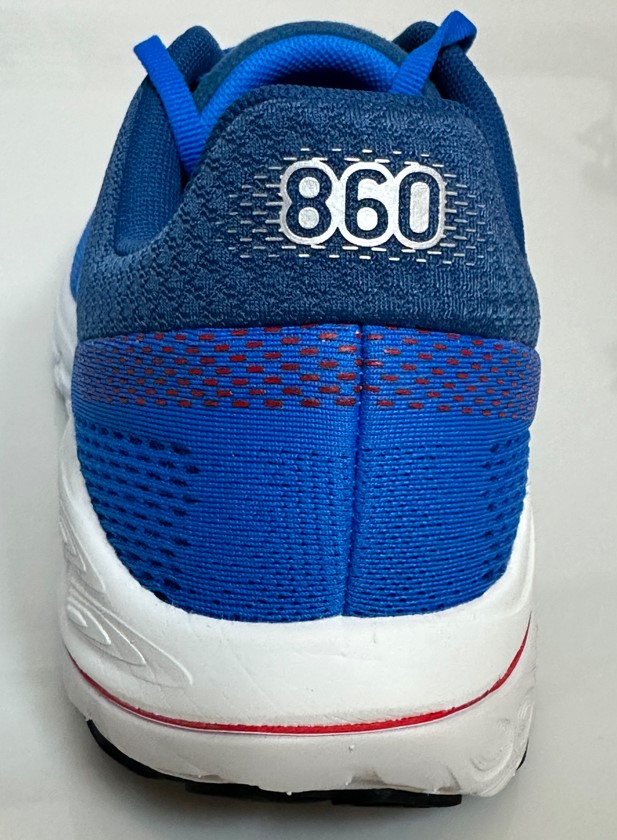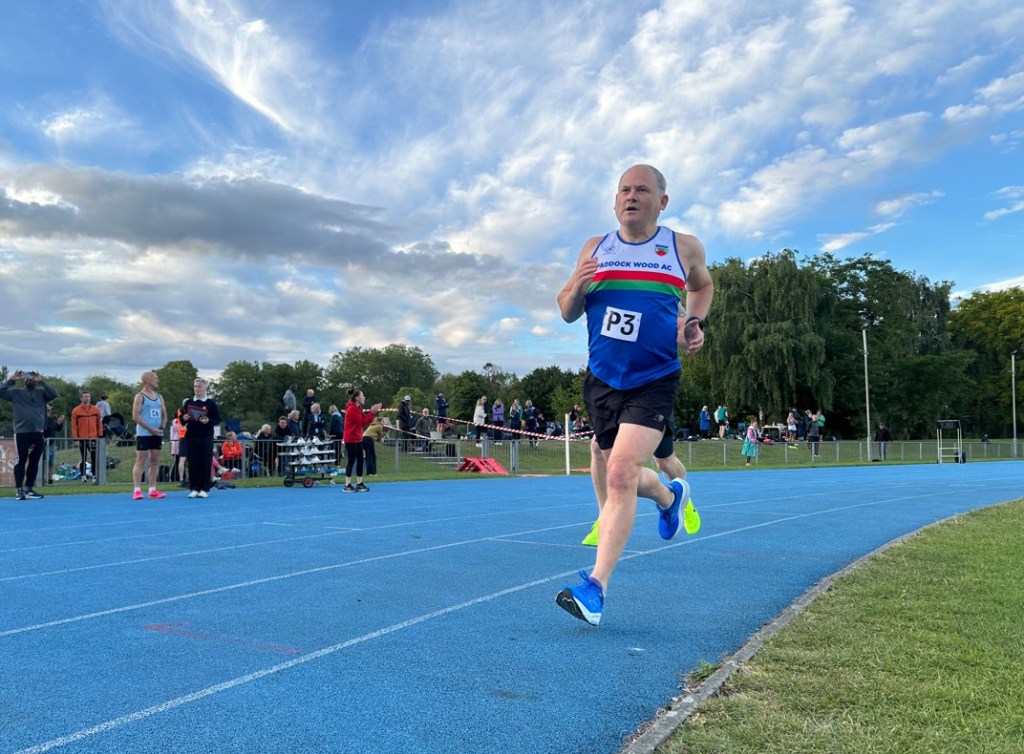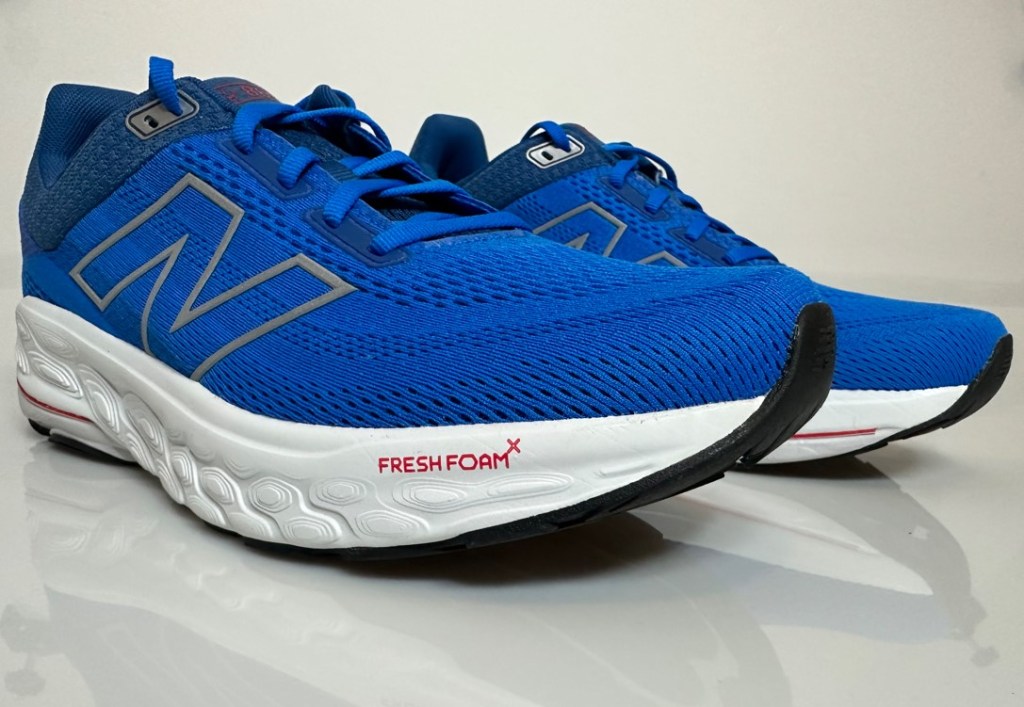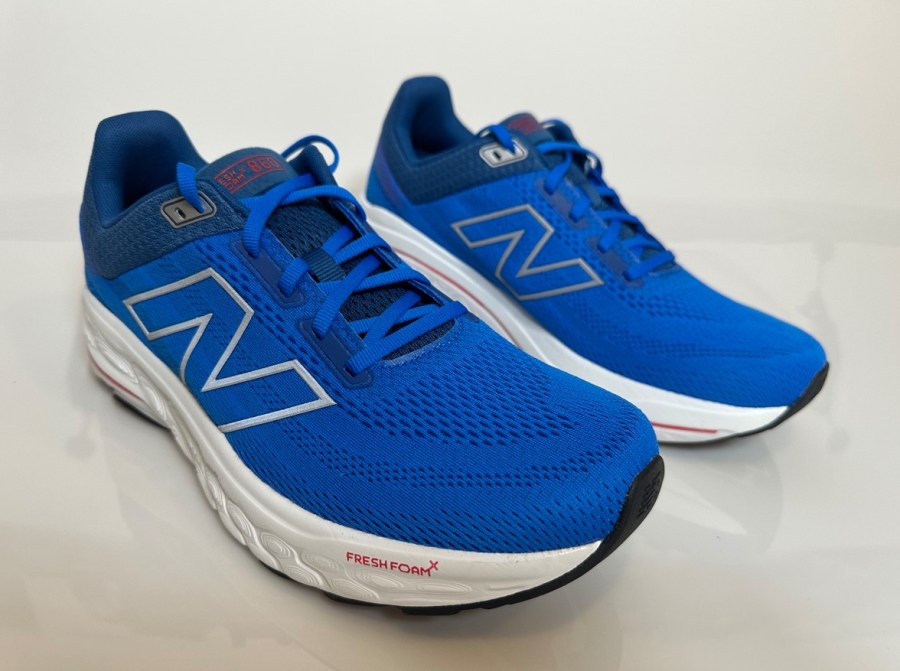If you’re looking for a lively stability shoe, try the New Balance Fresh Foam X 860 v14.
I realised that I needed stability running shoes after I had a few problems with the New Balance 1080 v12. I bought them for the Edinburgh Marathon but they were just not working for me in test runs. Instead, I chose my first pair of stability shoes, the New Balance 860 v12. They performed well for me, not just in the marathon, and became one of my favorite shoes for almost all running conditions and distances.
Men’s Fitness verdict
The New Balance Fresh Foam X 860 v14 offers overpronators the perfect balance of stability and cushioning for road running. They have good trail running and race potential too.- Confident feel and good bounce
- Performs well on road and moderate trail conditions
- Good for wet and dry road racing
- Can’t compete with more expensive shoes for bounce and energy
- May feel a little heavy for those who prefer a lighter racing shoe
Why you can trust Men’s Fitness
At Men’s Fitness we pride ourselves on delivering information that serves a singular purpose: to improve some aspect of your health, fitness or wellbeing. For over 16 years, we’ve been publishing authoritative health and fitness content – written by our expert editors and contributors. We spend hours testing every product or service we review, so you can be sure you’re buying the best. Find out more about how we test.
The New Balance Fresh Foam X 860 v14 was tested by Robert Bowie. In his college days Robert was a sprinter, running 100m in under 12 secs. Now, in his 50s, representing Paddock Wood Athletics Club, he runs all track distances, cross country and road races up to marathon.
In the past, I’ve found New Balance shoes to be small in size so have gone up half a size for a good fit and this was true for the 860 v12 stability shoe. When I first tried on the New Balance Fresh Foam X 860 v14, my first impression was the size was right and my foot well held. The shoe looks quite different to previous iterations, looking more like the old 1080s.
New Balance Fresh Foam X 860 v14 design
On the 860 v14 shoes, I particularly like the upper body surround which gives a sense of security. It’s much better in that regard than my Nike Pegasus Turbo Next Nature, and felt softer underfoot. The Fresh Foam X foam delivered more spring than I remember coming from the v12s. And again it performed favourably compared to the Nike Pegasus. However, it has a little less life than the Nike Alphafly, which I tried but rejected because I wanted a more stable shoe. For me, the New Balance 860 v14 strikes a balance between the newer levels of bounce some shoes give while still giving me the security and confidence I expect from a stability shoe.



The 860 v12s I used previously had a stack height of 34/24mm, and the v14s are 38/30mm. That might not seem a great deal different – 4mm more mm on the heel and 6mm more at the front. But running in them I felt there was noticeably more cushioning along the full length of the shoe. And in my first race test, over 800m, I experienced a more impressive toe-off action. This was the first time I’d raced 800m this year, and I knocked 4 seconds off my time from last year. I don’t usually track race in trainers (preferring spikes) but I was coming back from injury and needed the confidence to race that I’d get from a less aggressive shoe.
New Balance Fresh Foam X 860 v14 performance
When using these shoes for a 10k road and trail training run it gave me confidence over uneven surfaces. I also felt my feet held well in the shoe, making for a sure-footed experience. There was no in-shoe movement, which for me is essential. Make sure you get the right size with New Balance which for me is half a size bigger than Nike, for instance. A key difference between the 860 v14 stability shoe and my Nike Pegasus training shoe is that the stability shoe’s material over the foot is thicker, unlike the more exposed feel of the Nike’s thinner fabric. It is still very breathable, though, even in hot running conditions.
Pretty much all of my training involve hills, as I live in a valley with limited routes on the flat. Going up hills the material in the shoe is notable with the increased curve of the foot but I didn’t find this a problem. However, it might be right for runners who like a ‘barely there’ feel across the top of their foot. I prefer to sacrifice that for extra stability.
All-rounder potential
While in the depth of winter and on a wet run I’d be looking to use trail shoes for off-roading, in good conditions these shoes perform well for me. On tracks and woody paths with roots and stones they provide a more cushioned alternative to a trail shoe.
I also tried the New Balance Fresh Foam X 860 v14s out in several shorter road races, including a 5k, 5-mile and 10k. The five miler was very wet and here I found the shoe expels water very well. There was no water-logging in the downpour I ran through. I need a bit of bounce to keep pace in the mid-race phase and for the final sprint finishes – this shoe delivered both. I was pleased to get new PBs at all three of these races. I’m sure there are other shoes that will deliver more bounce and energy, but my calculation is that to really go all-out I need the shoe that offers a balance between dynamic energy and stability. And that’s what I get with the New Balance Fresh Foam X 860 v14.
Do you need stability shoes?
Stability running shoes like these New Balance Fresh Foam X 860 v14s can help protect runners from all sorts of problems if they run with a more severe overpronating style. This is when the foot lands naturally on the inside edge, rather than flat. You might be surprised to know that around 70% of all runners overpronate. However, it’s normally only severe overpronators who need to consider stability shoes.
So what does it matter? It matters a lot if you want to run without pain and injury. And we’re not just talking about your feet, as the strains travel up the legs and can cause problems with your knees and your hips.
If you’re concerned that you might be at risk, the best thing to do is to visit a specialist who can analyse for running style (gait). Most running shops can do this, either with a gait analysis treadmill or just by watching you run along the street outside the shop.
You can also look at a pair of your old trainers. If they’re disproportionately worn out on the inside edge of your shoes, this is a clear sign of overpronation.
Related content:







